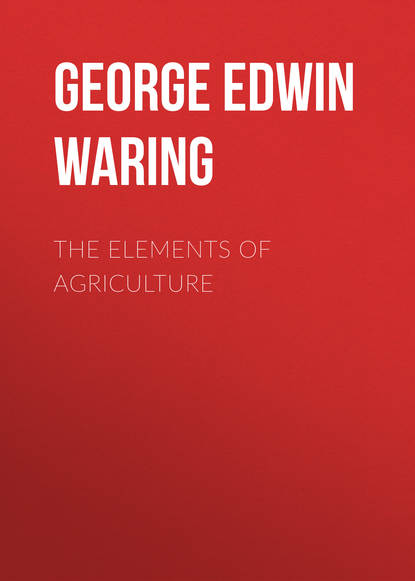По всем вопросам обращайтесь на: info@litportal.ru
(©) 2003-2024.
✖
The Elements of Agriculture
Настройки чтения
Размер шрифта
Высота строк
Поля
The way in which an analysis should be used is a matter of much importance. To a man who knows nothing of chemistry (be he ever so successful a farmer), an analysis, as received from a chemist, would be as useless and unintelligible as though it were written in Chinese; while, if a chemist who knew nothing of farming, were to give him advice concerning the application of manures, he would be led equally astray, and his course would be any thing but practical. It is necessary that chemical and practical knowledge should be combined, and then the value of analysis will be fully demonstrated. The amount of knowledge required is not great, but it must be thorough. The information contained in this little book is sufficient, but it would be folly for a man to attempt to use an analysis from reading it once hurriedly over. It must be studied and thought on with great care, before it can be of material assistance. The evenings of one winter, devoted to this subject, will enable a farmer to understand the application of analysis to practical farming, especially if other and more compendious works are also read. A less time could hardly be recommended.
Is there any doubt as to the practical value of analysis?
How should samples of soil for analysis be selected?
Where this attention cannot be given to the subject, the services of a Consulting Agriculturist should be employed to advise the treatment necessary to render fertile the soil analyzed.
Every farmer, however, should learn enough of the principles of agriculture to be able to use an analysis, when procured, without such assistance.[40 - See Author's card in the front of the book.]
Nearly all scientific men (all of the highest merit) are unanimous in their conviction of the practical value of an analysis of soils; and a volume of instances of their success, with hardly a single failure, might be published.
Prof. Mapes says, in the Working Farmer, that he has given advice on hundreds of different soils, and not a single instance can be found where he has failed to produce a profit greater than the cost of analysis and advice. Dr. T. C. Jackson, of Boston, the late Prof. Norton, of Yale College, and others, have had universal success in this matter.
Analysis must be considered the only sure road to economical farming.
To select samples of soil for analysis, take a spadeful from various parts of the field—going to exactly the depth to which it has been plowed—until, say a wheel-barrow full, has been obtained. Mix this well together, and send about a quart or a pint of it (free from stones) to the chemist. This will represent all of that part of the farm which has been subject to the same cultivation, and is of the same mechanical character. If there are marked differences in the kinds of soil, separate analyses will be necessary.
Give an instance of the success of treatment according to analysis?
When an analysis is obtained, a regular debtor and creditor account may be kept with the soil; and the farmer may know by the composition of the ashes of his crops, and the manures supplied, whether he is maintaining the fertility of his soil.
Prof. Mapes once purchased some land which could not produce corn at all, and by applying only such manures as analysis indicated to be necessary, at a cost of less than $2 per acre, he obtained the first year over fifty bushels of shelled corn per acre. The land has since continued to improve, and is as fertile as any in the State. It has produced in one season a sufficient crop of cabbages to pay the expense of cultivation, and over $250 per acre besides, though it was apparently worthless when he purchased it.
These are strong facts, and should arouse the farmers of the whole country to their true interests. Let them not call the teachings of science "book-farming," but "prove all things—hold fast that which is good."
CHAPTER II
TABLES OF ANALYSIS
ANALYSES OF THE ASHES OF CROPS
No. I.
No. II
No. III
No. IV
No. V
No. VI
Amount of Inorganic Matter removed from the soil by ten bushels of grains, etc., and by the straw, etc., required in their production—estimated in pounds:
No. VII
No. VIII
No. IX
No. X
No. XI
No. XII
Composition of Ashes, leached and unleached, showing their manurial value:
No. XIII
No. XIV
TOBACCO.
Analysis of the ash of the Plant [Will & Fresedius]—
Analysis of the ash of the Root [Berthier]—
The Soluble parts consist of nearly—
No. XV
Composition of some of the more common Compounds of Acids and Alkalies
[AR] Contain a large amount of Water.
No. XVI
Proximate Analyses of Crops, showing the amount of the different Organic Compounds contained in Grain, Roots, Hay, etc.—estimated in pounds:
[AS] Pectic Acid.
No. XVII
Amount of Ash left after burning 1000 lbs. of various plants, ordinarily dry—
No. XVIII
MANURES.
HORSE MANURE.
Solid Dung—
Composition of the Ash—
No. XIX






